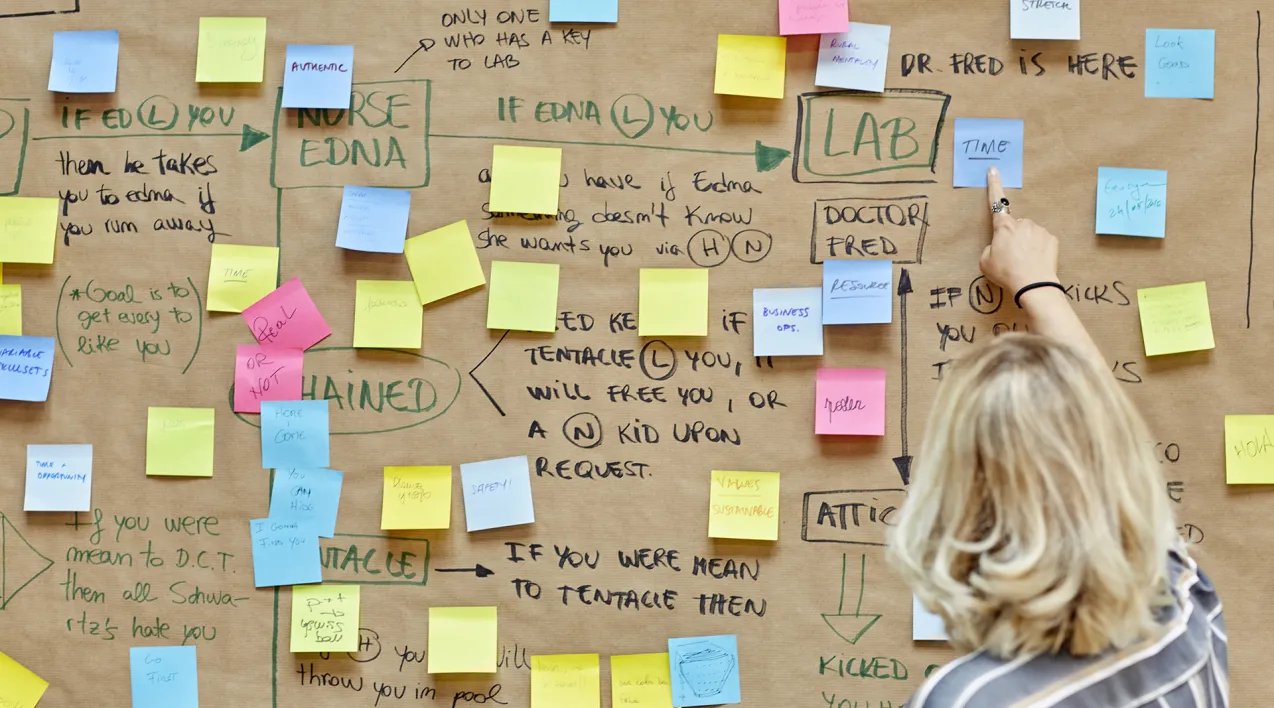
Following the outbreak of COVID-19, working professionals fled office buildings and retreated to kitchen tables, living rooms, and home studies around the world. Business leaders—most navigating the remote workplace for the first time—reacted quickly and decisively. After all, business continuity depended on it.
As some employees continue to work from home and others venture back into the office, a transformative work paradigm emerges: the HybridHQ, more commonly known as the hybrid workplace. While the immediate threat of the virus forced businesses into a reactive stance, hybrid work warrants a proactive, intentional transformation strategy. Like any transformation, approaching the hybrid workplace requires clarity around purpose and priorities—paired with the corresponding activities needed to realize anticipated value.
So far this blog series has taken you through essential considerations in the hybrid workplace transformation – surrounding employee experience design, technology, culture, and more. In the final installment of this series, we’ll dig into one additional topic that must be top of mind for leaders in the journey to hybrid: inclusion and diversity (I&D).
For many organizations, the extraordinary circumstances of a global pandemic and the spotlight on racial and societal inequities in 2020 called for leaders to focus on their Inclusion and Diversity (I&D) efforts to better support and empower employees. Now, as many organizations prepare to shift to hybrid, they must consider how I&D – the methods and strategies used to cultivate an inclusive and diverse workplace – can help inform and transform this new working model.
I&D is one of the most important, yet challenging, undertakings organizations face today. It is also one of the key components to making organizations function better. Inclusion is about developing a culture that embraces all people. It occurs when members of a group feel valued for their unique contributions and can share openly and honestly, knowing they will be heard, respected, and understood. Diversity is about having individuals represent many unique backgrounds, beliefs, and values. It can take many forms: generational diversity, gender diversity, racial diversity, or diversity in backgrounds, perspectives, and experiences.
A strategic focus on I&D helps organizations:
- Harness the potential of their employees and make their teams more effective. After all, when employees feel that they belong to a team, they’re more willing to collaborate and produce a high-quality output.
- Keep up with today’s pace of change by leveraging diverse perspectives, backgrounds, and skillsets.
- Nurture continuous learning mindsets that unlock new opportunities and ideas, leading to transformation, competitive differentiation, and often, higher profits.
This list doesn’t even begin to scratch the surface, but it does serve to highlight how I&D can have an impact on an organization’s success. And it starts to build the case for why organizations must make inclusion and diversity a way of life – not just an initiative or program – in the hybrid world.
It’s clear, though, that few leaders are considering I&D as they embark on the shift to hybrid. Recent Gartner research indicates that just 13 percent of company leaders are concerned about creating parity between the remote and in-office experience. But in the hybrid working environment, leaders must have an intentional and proactive focus on fostering fair, equitable, and inclusive experiences across all employee groups, no matter their location. They must acknowledge that different employees will respond in different ways to a “flexible,” hybrid model:
- There may be certain individuals or pockets of your workforce who feel that they can’t truly and fully take advantage of flexible working arrangements, because of their race or gender. Left unaddressed, these employees will begin to feel unseen, undervalued, and underappreciated.
- Personalities play a role, too. You may have introverts working from home and extroverts in the office. This could stifle collaboration and diversity of thought. It could also bring perception biases to light. For example, a team leader may have a tendency to believe Employee A, an extrovert who routinely shows up to the office, is putting in more effort than Employee B, an introvert, who isn’t present because they are working from home. This belief, of course, would be incorrect, but it would be detrimental to Employee B’s career – impacting performance reviews, eliminating opportunities they might have had if they were in plain sight, and much more.
Clearly, I&D is essential in your hybrid workplace strategy, and this moment presents a significant opportunity for organizations to consider how it can help bring out a new level of human potential in their workforce. The kind of potential that fuels continuous transformation and growth.
There may not be a one-size-fits-all answer for making your hybrid workplace one where all employees feel a sense of belonging, and where everyone is welcomed and appreciated for their individual capabilities, characteristics, contributions, and diversity of background, thought, and expertise. Even so, we’ve got some ideas to help you get started:
Let go of assumptions to let in new perspectives
Organizations are often quick to assume that flexible working arrangements, such as the hybrid model, automatically drive inclusion and engage a more diverse set of employees. But the truth is, that’s not always the case. In fact, according to a 2021 Microsoft report, “in 2020, when most of the working population was remote, black and U.S. Latino workers in the U.S. reported more difficulties building relationships with their direct team, feeling included, and [were] less likely to bring their authentic selves to work than a year ago than the broader population.”
What this tells us is that leaders cannot rely on any assumptions about how employees experience different ways of working or what they’ll require to feel supported in a hybrid environment. As discussed above, certain individuals or groups of employees will respond differently to a hybrid policy, but this change will be significant for all employees. Leaders need to give grace and time to adjust, and they must put in the work to deeply understand employee sentiments, preferences, and needs.
Employee listening can help leaders gather perspectives and fresh ideas from the diverse set of employees that make up your hybrid workforce. As Fast Company puts it in a recent article describing ways to include introverts in the hybrid model: “Just like organizations track and monitor surface-level diversity such as demographic differences, they should also be tracking deep-level diversity (such as traits, values, and preferences), because it can help facilitate feelings of inclusion and belonging.” Tracking deep-level diversity will help leaders better understand employees’ tendencies and preferences, which will help ensure you incorporate different perspectives into your I&D initiatives and hybrid environment. Additionally, by obtaining input, you’ll be co-creating with different groups of employees across many levels in your organization. This is another way to champion diversity, equity, and inclusion, while designing your hybrid strategy alongside the people who will be impacted most.
Build a new muscle for collaboration
In many cases, the shift to remote work in 2020 presented new career opportunities for people who may otherwise have had a difficult time gaining access to them. As Microsoft asserts: “Companies in major cities can hire talent from underrepresented groups that may not have the means or desire to move to a big city. And in smaller cities, companies will now have access to talent that may have a different set of skills than they had before." But expanding opportunities to different groups of people from diverse backgrounds means very little if your organization does not have a strong muscle for collaboration in the hybrid environment.
Collaboration is not only critical for productivity and enabling high-performing teams; it’s important because it invites the exchange of ideas, which drives inclusivity and diversity of thought. In a virtual environment, it’s something many organizations are still struggling with – and it will undoubtedly grow in complexity as some employees make their way back into an office and others remain remote.
For the hybrid workplace to be an inclusive one – where diversity of thought is valued and rewarded – organizations must strengthen their ability to collaborate, leveraging the tools and technology at their disposal. To facilitate better collaboration in a hybrid environment:
- Use collaborative tools that enable communication and build connection: These are the kinds of platforms that are designed to help organizations establish a sense of community among employees (agnostic of location), give everyone a voice and way to contribute, and promote employee well-being. Some examples include Workplace, which encourages information and idea sharing, as well as social interaction. Or Donut, a digital app that makes it easy to connect with co-workers for more casual conversations.
- Use collaborative tools that enable high-performing teams: These are the kinds of tools that allow teams to work in a cohesive manner to deliver on goals. Examples include digital workspaces, like Mural, which serves as a virtual canvas where teams can brainstorm, organize ideas, and solve problems. These tools promote diversity of thought. Importantly, for tools like Mural to be effective, there needs to be a behavioral shift that drives team adoption. Leaders should be at the forefront of this movement, serving as role models of the behaviors they wish to see from employees. By tapping into these tools and technology firsthand, they're more likely to shift behaviors and solidify new norms and ways of working.
Commit to a culture that supports I&D
In part four of this series, we explored why and how organizations must evolve their culture to support future ways of working. As part of this, leaders must think through which elements of their culture are supporting inclusion and diversity, and which components need to change in order to get there. Consider reviewing the eight culture drivers with an eye toward I&D in the hybrid world. Here are just two examples:
- Leadership: Today’s organizations need to move away from the old-school role of leadership that valued seniority and rank. Instead, for greater inclusion and diversity of thought, leadership in the hybrid workplace should be recognized by the capacity and intellectual know-how of an individual. How does your culture need to evolve to support this shift?
- Environment: In today’s business landscape, organizations must establish psychologically safe environments to promote inclusion, diversity, and high-performing teams. This is an environment where the people within your organization feel valued and respected enough to speak up and share innovative ideas without fear of repercussions. How does your culture need to adapt to support psychological safety?
Co-creation is important here, as well, as you seek to evolve your culture and perhaps right the wrongs of the past. The various groups of employees that comprise your hybrid workforce should have a voice and a clear role in reshaping your culture in support of I&D.
In our global, multifaceted society, it has become increasingly necessary for organizations to factor inclusiveness and diversity into their business strategies. As you bring your hybrid working model to life, keeping I&D at the forefront of your strategic focus can help set a positive tone and fuel creativity, collaboration, innovation, and much more. These are the very characteristics that will help your organization continuously transform into the future state of work.
Gartner does not endorse any vendor, product or service depicted in its research publications, and does not advise technology users to select only those vendors with the highest ratings or other designation. Gartner research publications consist of the opinions of Gartner's research organization and should not be construed as statements of fact. Gartner disclaims all warranties, express or implied, with respect to this research, including any warranties of merchantability or fitness for a particular purpose.
Related Content






